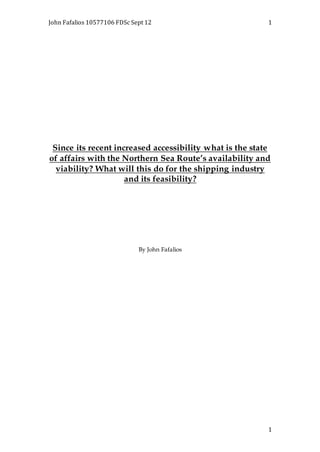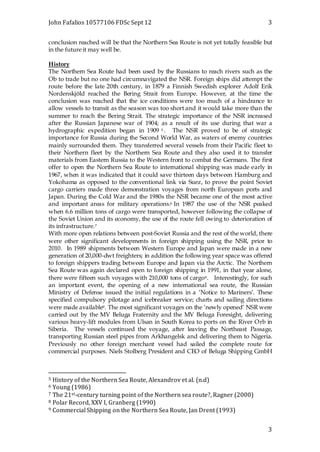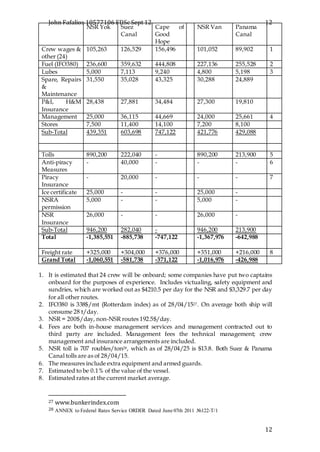This document discusses the potential viability of using the Northern Sea Route for commercial shipping. It provides background on the history of the route, describing how its navigability has increased due to climate change and Russian investment in infrastructure. The document then analyzes potential shipping routes from Rotterdam to Yokohama and from Rotterdam to Vancouver using either the Northern Sea Route or conventional routes through the Suez Canal and Panama Canal. It models voyage durations and estimated savings for tankers and bulk carriers undertaking these hypothetical routes, finding that the Northern Sea Route could save vessels an average of 40% on travel time compared to alternatives. However, the document notes infrastructure and icebreaker support would need further development for the Northern Sea Route to be fully


















